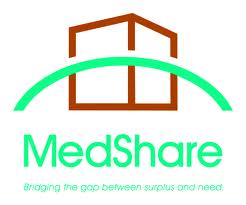The healthcare sector is constantly evolving with new technology. New developments in digital technology are changing the nature of healthcare billing practices.
One of the technological trends affecting the healthcare industry is the growing popularity of cryptocurrencies. Stablecoins, in particular, can lead to some major developments in healthcare.
How will stablecoins change the future of healthcare? This post will delve into some of the issues. We will talk about the history of stablecoins, before going into more details about the specific benefits for healthcare providers.
New Technology Trends Are Crucial for Healthcare Providers
A growing number of healthcare providers are struggling these days. The pandemic took its toll on many hospitals around the world. A number of other challenges are culminating, including greater regulatory risks and the rising risk of insolvency during a recession.
Fortunately, new technology is changing the healthcare sector. Cryptocurrency is one of the emerging technologies that could help the healthcare sector.
What Are the Benefits of Stablecoins?
The ability to store dollars on the blockchain while trading eliminates the hassle of transferring funds to and from bank accounts, reducing fees and time. Bank deposits from exchanges take a few days and can be slowed down on outside business hours, while the blockchain operates constantly.
You can learn about the nowadays ways to operate your crypto with bitcoin ai app.
These issues make stablecoins viable: transferring money globally without problems, safely, and with low fees. Many people overseas send money home to friends, relatives, or business associates, and make payments via bank transfer.
If someone wants to use standard payment mediums to transfer $200 abroad, it costs an average of $30. Using stablecoins, sending thousands of dollars will cost several dollars, but on the blockchain can be less than a cent.
Transferring money is not only cheaper but also much quicker transactions are completed in seconds or minutes, instead of a few days, as with traditional money transfer methods.
Another benefit of stablecoins is security since wire fraud is rising worldwide and will cost consumers up to $1 billion. Banks can withdraw funds whenever they like, creating problems and reducing economic freedom.
Blockchain offers greater security than traditional banking. To make a transaction through the blockchain, it is enough to enter the correct address of your wallet, and the transfer will be guaranteed. You don’t have intermediaries who could undo mistakes. This responsibility is a safety benefit and the risk of human error; the new world of cryptocurrency requires more personal responsibility.
Stablecoins are available
Stablecoins were launched in 2014 with RealCoin (Tether), NuBits, and BitUSD. The differences between these three currencies lay in the pegging mechanism used to secure stablecoins. RealCoin (Tether) used physical assets including commercial paper, treasury bills, and bonds to back its stablecoin.
Let’s start by looking at three stablecoins that were released in 2014 – the “class of 2014”. Spoiler alert: only one of them is still trading in the markets, has shown tremendous growth, and is currently the third largest cryptocurrency by market capitalization.
Class of 2014
BitUSD
The first-ever stablecoin (BitUSD) were released on the Bitshares blockchain in 2014, which was backed by Bitshares’ own BTS token. After its creation, BTS was collateral for various stablecoins that were backed by fiat currencies.
In 2017, the BitUSD peg was broken due to high overall cryptocurrency volatility and flash liquidations, and actively traded ceased. You can track its movements with bti.live.
NuBits
NuBits was not pegged to any asset, instead relying on arbitrage and was pegged to the dollar. The price chart below shows how NuBits has suffered during times of exceptional volatility in the overall cryptocurrency markets.
The NuBits peg was first broken in May 2016, after NuBits traders and owners were caught off guard by a spike in the price of BTC. They exchanged a large number of NuBits for Bitcoin. This was the case when the tether broke for the second time in 2018. This leads to increased selling pressure.
Tether (RealCoin)
Tether is a cryptocurrency backed by centralized fiat currencies, which will mean that every new Tether token (USDT) issued is backed by tangible assets in the company’s treasury. Bitfinex and Tether have seen several cyberattacks and negative presses in recent years. Hackers stole $72M of Bitfinex in 2016, one of the biggest hacks in cryptocurrency history, followed by the $31M Tether in 2017. Over two years, there were investigations after Tether was accused of manipulating the market. Last year, controversy still raged around the management of the Tether treasury.
How Are Stablecoins Affecting the Future of Healthcare?
A growing number of large healthcare providers are starting to rely on cryptocurrencies, including the newer stablecoins. Some of the healthcare providers that already accept cryptocurrencies include the Cleveland Clinic, Bethesda Hospital East, Mayo Clinic, and Mercy Hospital. Some smaller hospitals are starting to accept bitcoin and other cryptocurrencies as well.
There are a lot of benefits of using cryptocurrencies for healthcare providers. Some of the biggest advantages include improving patient privacy (since patients can make payments virtually anonymously instead of leaving a paper trail), reducing the percent of delinquent payments (since patients have more options for making payments) and lower fees since cryptocurrencies don’t charge the same fees as traditional financial institutions.
While there are a lot of obvious benefits of using cryptocurrencies, the lower fees are among the most appealing. Hospitals are operating on increasingly lower operating margins. During the second quarter of 2022, operating margins were actually negative at -3.3%. Accepting cryptocurrencies could slightly offset those losses.
Cryptocurrencies like stablecoins can also help make HIPAA compliance easier, since patients can payments more anonymously. This is a major appeal to many healthcare organizations.







